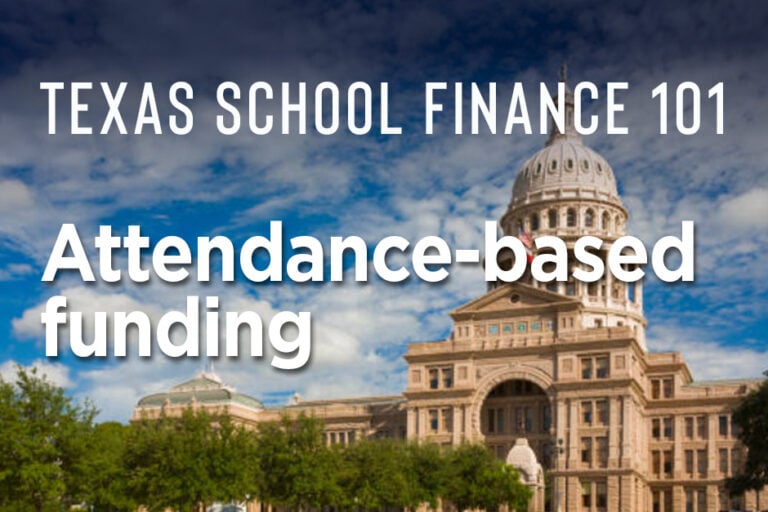
The article below is the fifth in a series designed to give readers insight into the school finance system in Texas. School finance is complicated. But it matters because it affects everything: student learning, teacher pay, school facilities, security, school buses, computers, career and technical opportunities, internet access, sports, fine arts and on and on and on. Ultimately, it affects the future of Texas.
Each article in the series will bite off a small piece of school finance and attempt to give readers a basic understanding of the system in Texas and Arlington ISD. Check back each Wednesday for a new article.
Funding is based on attendance, not enrollment
As we’ve talked about in the previous articles, the amount of money a school district can receive in a year is based on attendance. In other words, school district revenue is based on how many students attend school. The more students, the more money. And vice versa – fewer students equals less money.
The key word here is attendance. Funding is not based on enrollment.
So, what’s the difference?
Enrollment is the total number of students who go to a school. It’s the number of students who completed registration and enrolled at the campus.
Attendance is the number of students who attended school on any given day.
So, for example, pick any class at any school. Let’s take a third-grade class at Atherton Elementary. The enrollment in the class might be 22. That means 22 students are a part of that class. On any given day, the attendance might be 22. All the students might be there for that day. But on other days, the attendance will be less. On some Wednesday it might be 18 – because two students are sick, one is out of town with his family and one missed school because a parent’s car broke down.
When it comes to funding Atherton Elementary (and every public school in Texas), the state only cares about the attendance number. The state determines how much money a school district is entitled to based on the average daily attendance – known as ADA – at its schools.
ADA = sum of attendance counts throughout the year ÷ days of instruction
So, if a student misses school, they are not counted that day for funding purposes.
What is wrong with this model?
Even though the state only funds based on attendance, a school district’s expenses are based on enrollment. The district provides teachers, classrooms, facilities, books, materials, security and more based on enrollment. The district provides services – as it should – to every single student in the district. When a student misses school, that doesn’t make it cheaper to operate the school.
Attendance at school is important. Success for students in school often hinges on their attendance. And that’s why Arlington ISD – and all school districts – promote good attendance. But there are issues outside of anyone’s control that impact attendance. Students are going to get sick. Flu is going to hit. Plus, many students deal with challenges at home that sometimes impact their ability to get to school.
The result is that the state only permits school districts to receive funding for a portion of its students. The entitlement is based on a fraction of the students who go to the school.
In Arlington ISD last year (2023-2024), the enrollment was 54,713. That’s the number of students that the district staffed for and worked to educate. However, the ADA for last year was 93% of enrollment – about 50,883 students. So, that’s the number that the state used to determine Arlington ISD’s entitlement for the year. In other words, that’s the number of students the district received an allotment for. Arlington ISD received funding for nearly 4,000 fewer students than it actually served.
That amount of money isn’t nearly enough to cover the district’s capital expenses – like building or renovating schools or buying new school buses, computers or music instruments. So, Arlington ISD – and all districts in Texas – must rely on school bonds to fund some of those things. School bonds will be our topic next week.
